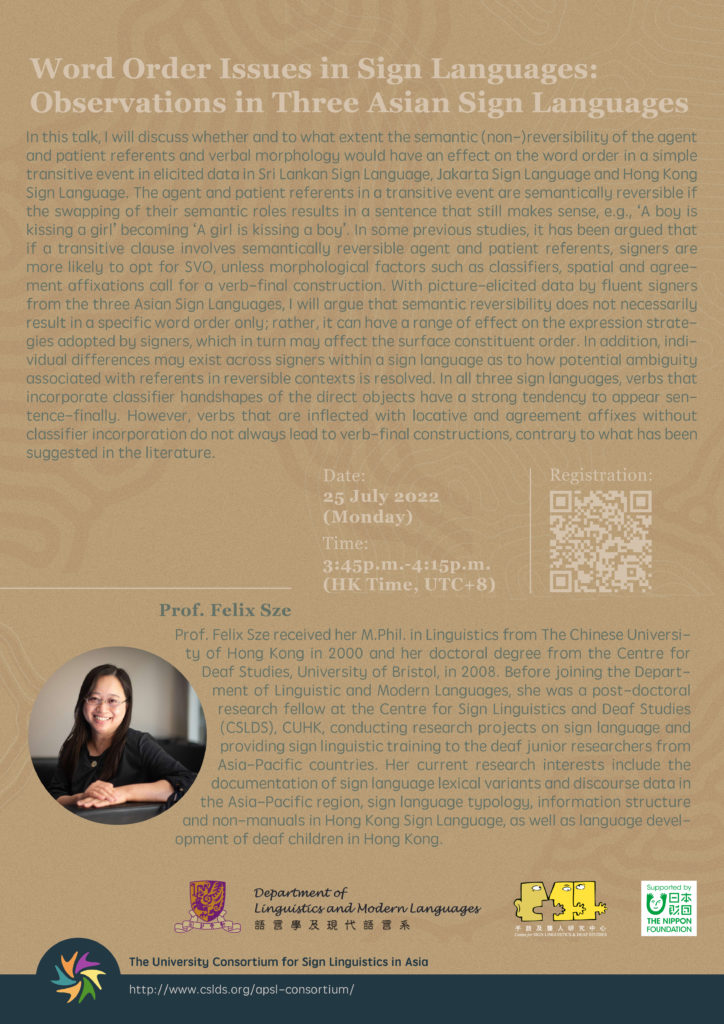Click HERE for the presentation video with sign interpretation.

In this talk, I will discuss whether and to what extent the semantic (non-)reversibility of the agent and patient referents and verbal morphology would have an effect on the word order in a simple transitive event in elicited data in Sri Lankan Sign Language, Jakarta Sign Language and Hong Kong Sign Language. The agent and patient referents in a transitive event are semantically reversible if the swapping of their semantic roles results in a sentence that still makes sense, e.g., ‘A boy is kissing a girl’ becoming ‘A girl is kissing a boy’. In some previous studies, it has been argued that if a transitive clause involves semantically reversible agent and patient referents, signers are more likely to opt for SVO, unless morphological factors such as classifiers, spatial and agreement affixations call for a verb-final construction. With picture-elicited data by fluent signers from the three Asian Sign Languages, I will argue that semantic reversibility does not necessarily result in a specific word order only; rather, it can have a range of effect on the expression strategies adopted by signers, which in turn may affect the surface constituent order. In addition, individual differences may exist across signers within a sign language as to how potential ambiguity associated with referents in reversible contexts is resolved. In all three sign languages, verbs that incorporate classifier handshapes of the direct objects have a strong tendency to appear sentence-finally. However, verbs that are inflected with locative and agreement affixes without classifier incorporation do not always lead to verb-final constructions, contrary to what has been suggested in the literature.
![]()
